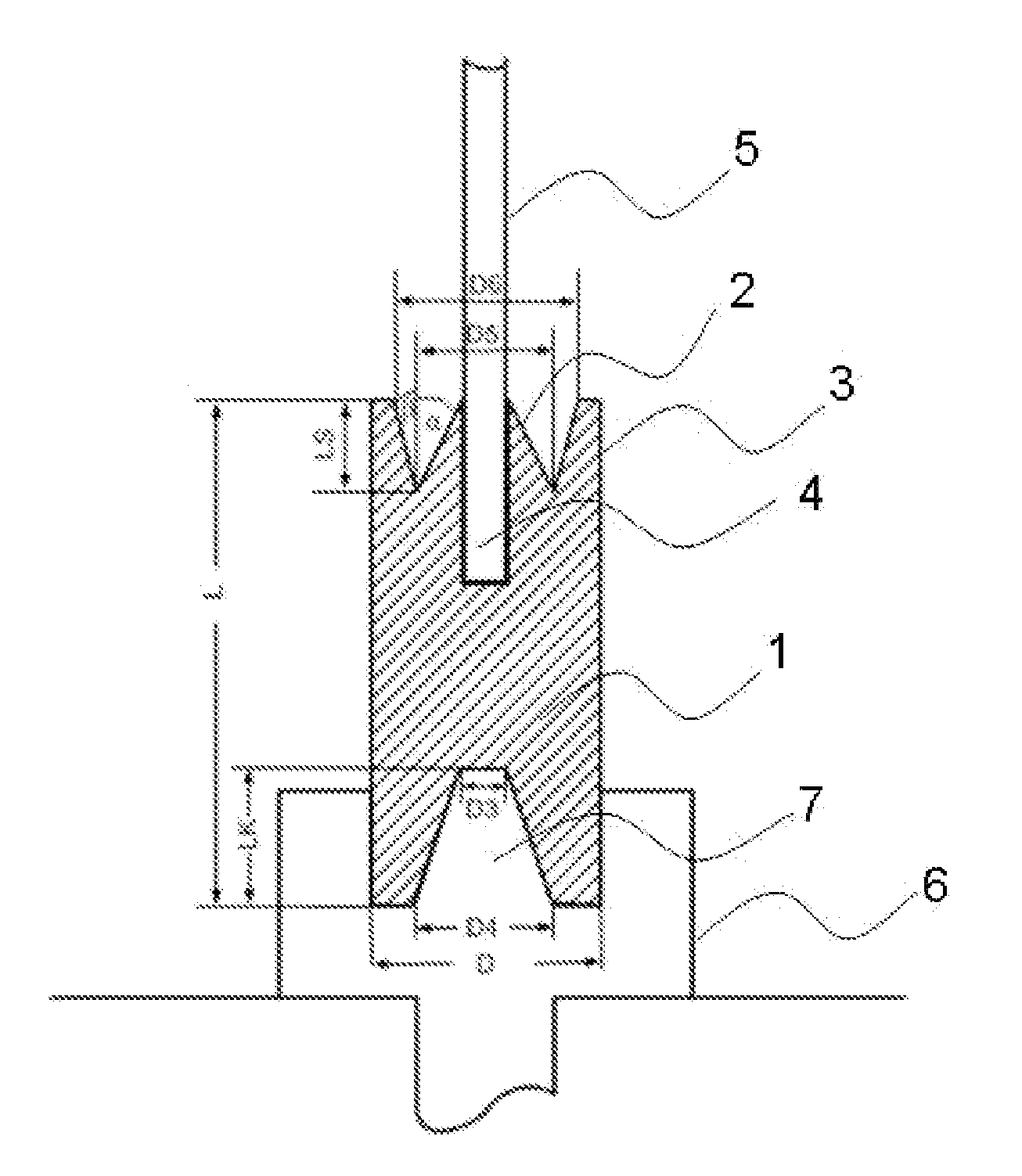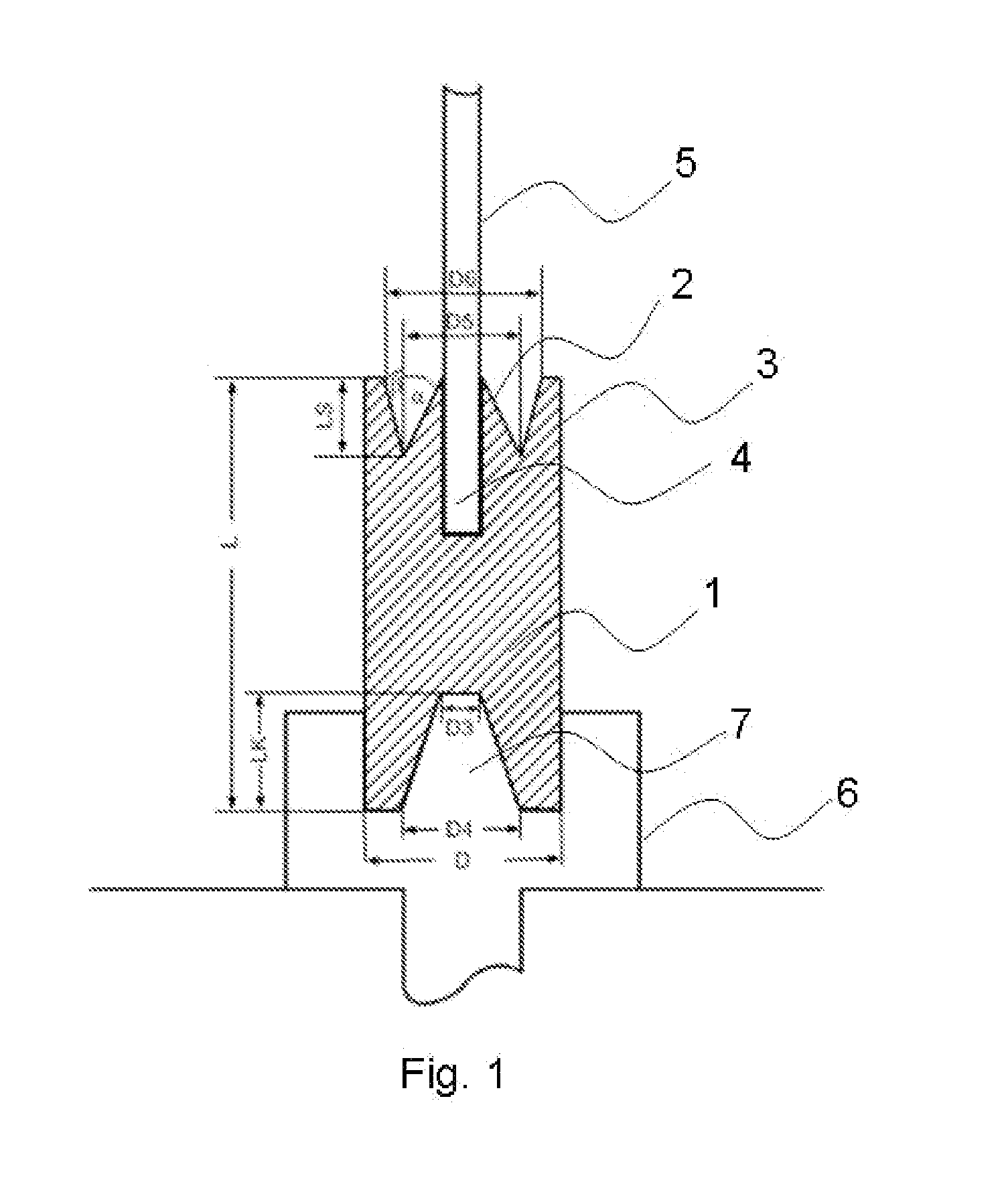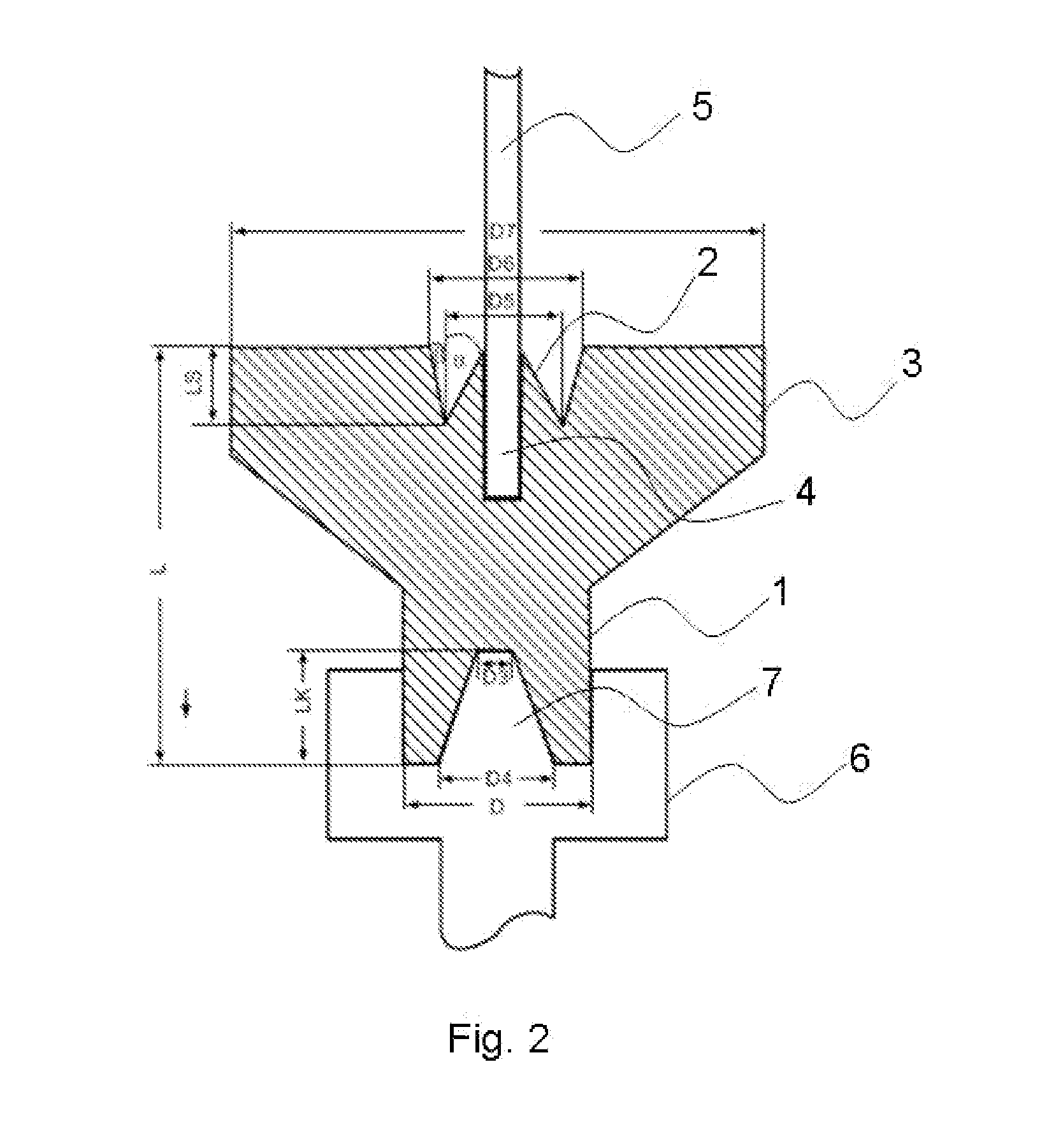Conical graphite electrode with raised edge
a graphite electrode and raised edge technology, applied in silicon compounds, cell components, coatings, etc., can solve the problems of high frequency of collapse before, high thermal dissipation risk in the reactor, and high thermal dissipation of electrodes, so as to improve thermal dissipation and improve current density distribution
- Summary
- Abstract
- Description
- Claims
- Application Information
AI Technical Summary
Benefits of technology
Problems solved by technology
Method used
Image
Examples
example 1
[0075]Electrodes according to the invention with a raised edge, as represented in FIG. 1, were used for the deposition. In addition, a heat sink was used on the base of the electrode. The electrodes used consisted of ultrapure electrographite with a specific thermal conductivity of 80 W / (m*K) and an electrical resistivity of 15 μohm*m.
[0076]The electrode had the following geometry:
total length (L):118 mm diameter (D):65 mmcone angle (α):32°cone angle (β):16°electrode tip length (LS):21 mmelectrode tip diameter (D5):34 mminner edge diameter (D6):46 mmheat sink diameter (D3):25 mmheat sink diameter (D4):45 mmheat sink length (LK):50 mm
[0077]At the end of the reaction, the reactor was opened and the number of batches with collapsed polysilicon rods was noted. Out of 100 batches, 2 batches had collapsed after reaching the final diameter but no batches had collapsed before reaching the final diameter during the deposition.
example 2
[0078]Electrodes according to the invention with a raised edge, which consisted of 2 different zones with different specific thermal conductivity (see FIG. 3), were used for the deposition. In addition, a heat sink was used on the base of the electrode. Zone (A) of the electrodes used consisted of ultrapure electrographite with a specific thermal conductivity of 135 W / (m*K) and an electrical resistivity of 10 μohm*m. For the inner zone (B), an ultrapure electrographite with a specific thermal conductivity of 50 W / (m*K) and an electrical resistivity of 22 μohm*m was used.
[0079]The electrode had the following geometry:
total length (L):118 mm diameter (D):65 mmcone angle (α):32°cone angle (β):16°electrode tip length (LS):21 mmelectrode tip diameter (D5):34 mminner edge diameter (D6):46 mminsert length (LE):46 mminsert diameter (D1):34 mminsert diameter (D2):22 mmheat sink diameter (D3):25 mmheat sink diameter (D4):45 mmheat sink length (LK):50 mm
[0080]At the end of the reaction, the re...
example 3
[0081]Electrodes according to the invention with a raised edge were used for the deposition. In addition, the upper edge of this electrode was widened (see FIG. 2).
[0082]In addition, a heat sink was used on the base of the electrode. The electrodes used consisted of ultrapure electrographite with a specific thermal conductivity of 80 W / (m*K) and an electrical resistivity of 15 μohm*m.
[0083]The electrode had the following geometry:
total length (L):118 mm diameter (D):65 mmcone angle (α):32°cone angle (β):16°electrode tip length (LS):21 mmelectrode tip diameter (D5):34 mminner edge diameter (D6):46 mmwidened edge diameter (D7):130 mm heat sink diameter (D3):25 mmheat sink diameter (D4):45 mmheat sink length (LK):50 mm
[0084]At the end of the reaction, the reactor was opened and the number of batches with collapsed polysilicon rods was noted. Out of 100 batches, 1 batch had collapsed after reaching the final diameter, but no batches had collapsed before reaching the final diameter durin...
PUM
| Property | Measurement | Unit |
|---|---|---|
| Temperature | aaaaa | aaaaa |
| Pressure | aaaaa | aaaaa |
| Pressure | aaaaa | aaaaa |
Abstract
Description
Claims
Application Information
 Login to View More
Login to View More - R&D
- Intellectual Property
- Life Sciences
- Materials
- Tech Scout
- Unparalleled Data Quality
- Higher Quality Content
- 60% Fewer Hallucinations
Browse by: Latest US Patents, China's latest patents, Technical Efficacy Thesaurus, Application Domain, Technology Topic, Popular Technical Reports.
© 2025 PatSnap. All rights reserved.Legal|Privacy policy|Modern Slavery Act Transparency Statement|Sitemap|About US| Contact US: help@patsnap.com



